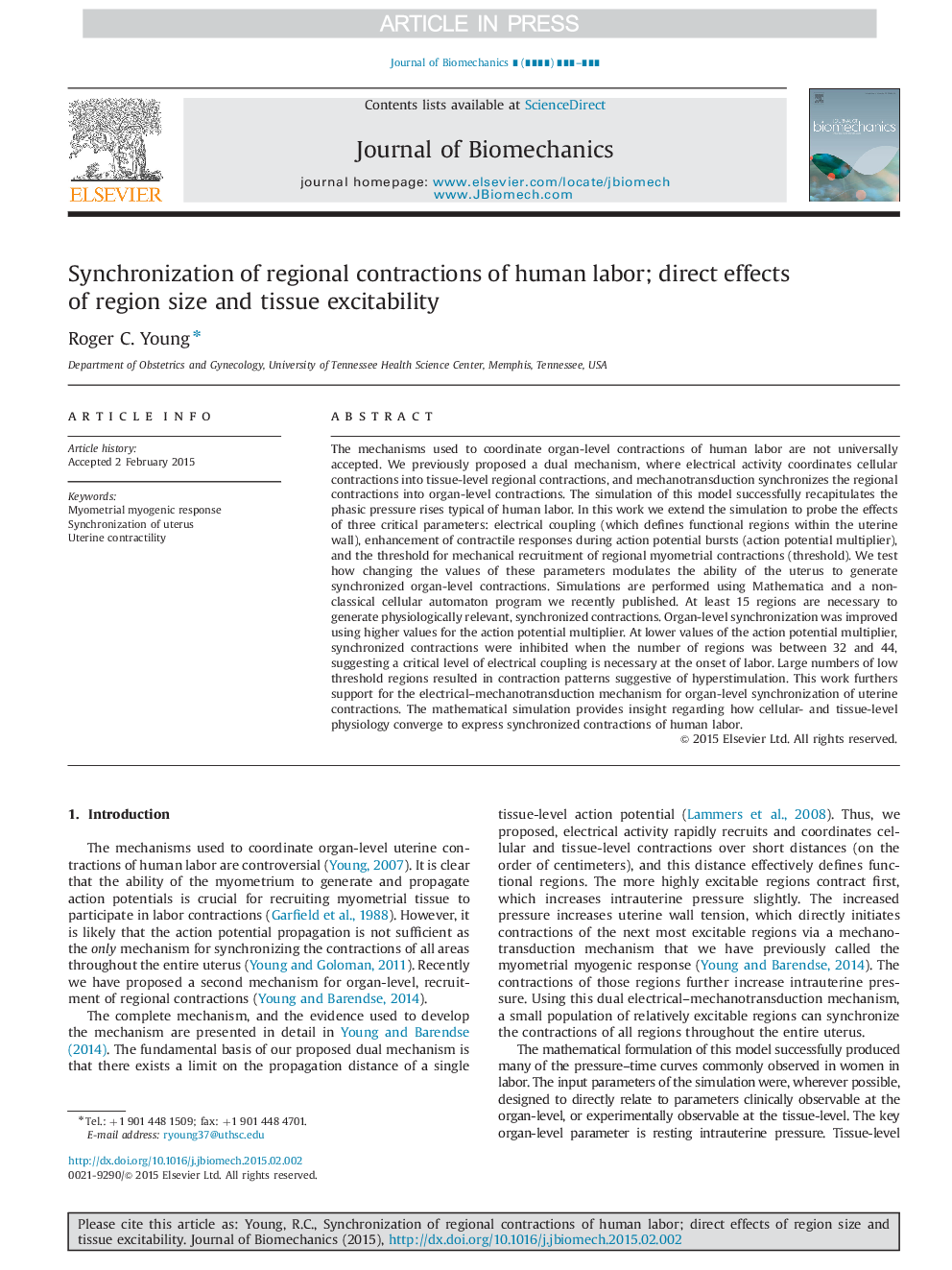| Article ID | Journal | Published Year | Pages | File Type |
|---|---|---|---|---|
| 10431364 | Journal of Biomechanics | 2015 | 6 Pages |
Abstract
The mechanisms used to coordinate organ-level contractions of human labor are not universally accepted. We previously proposed a dual mechanism, where electrical activity coordinates cellular contractions into tissue-level regional contractions, and mechanotransduction synchronizes the regional contractions into organ-level contractions. The simulation of this model successfully recapitulates the phasic pressure rises typical of human labor. In this work we extend the simulation to probe the effects of three critical parameters: electrical coupling (which defines functional regions within the uterine wall), enhancement of contractile responses during action potential bursts (action potential multiplier), and the threshold for mechanical recruitment of regional myometrial contractions (threshold). We test how changing the values of these parameters modulates the ability of the uterus to generate synchronized organ-level contractions. Simulations are performed using Mathematica and a non-classical cellular automaton program we recently published. At least 15 regions are necessary to generate physiologically relevant, synchronized contractions. Organ-level synchronization was improved using higher values for the action potential multiplier. At lower values of the action potential multiplier, synchronized contractions were inhibited when the number of regions was between 32 and 44, suggesting a critical level of electrical coupling is necessary at the onset of labor. Large numbers of low threshold regions resulted in contraction patterns suggestive of hyperstimulation. This work furthers support for the electrical-mechanotransduction mechanism for organ-level synchronization of uterine contractions. The mathematical simulation provides insight regarding how cellular- and tissue-level physiology converge to express synchronized contractions of human labor.
Keywords
Related Topics
Physical Sciences and Engineering
Engineering
Biomedical Engineering
Authors
Roger C. Young,
